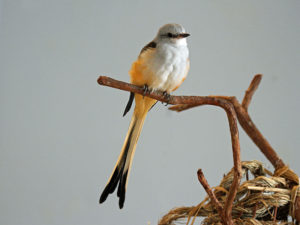Rare Birds in Maine – A Workshop with Doug Hitchcox – Saturday, Nov 2nd
Rare birds capture our imagination. They draw crowds, appear on headlines, and offer a unique opportunity to see something foreign to your area. Join Maine Audubon’s Staff Naturalist, Doug Hitchcox, for a workshop to learn how and why some birds appear out of their normal range, tools you can use to predict their occurrence, and tips on what to do if you find something unusual. During this, we will begin our day with a bird walk to check for any unusual sightings during “rarity season”, gather inside for a slideshow, then follow up with a second walk nearby.
Advance registration is required. To register, click on the link for this event in the Calendar column on the right side of this page, then scroll down and use the registration form. The price is $20/ person ($25/person for non-members), payable by cash or check at the workshop.
We’ll meet at the Fire Station in Biddeford Pool at 7:30 a.m. and start with a little local birding with rarities (or at least uncommon birds) in mind. Then we’ll have an indoor session in the second floor room of the FD building, then take another shot at some of the great local birding spots.
A Maine native, Doug Hitchcox grew up in Hollis and graduated from the University of Maine in 2011. The year he graduated, he traveled to every corner of the state trying to observe as many species as possible in what is known as a ‘Big Year.’ He ended the year having seen 314 species in the state, a new record for Maine. Throughout college Doug worked at the Scarborough Marsh Audubon Center running their store and leading walks and tours. Doug was hired as Maine Audubon’s Staff Naturalist in the summer of 2013, a long time “dream job” for him. In his free time, Doug is one of Maine’s eBird reviewers, owner and moderator of the ‘Maine-birds’ listserv, York County Audubon board member, and voting member of the Maine Bird Records Committee.
Photos below are LeConte’s Sparrow and Scissor-tailed Flycatcher, two birds that were found in Maine, well outside their normal range


